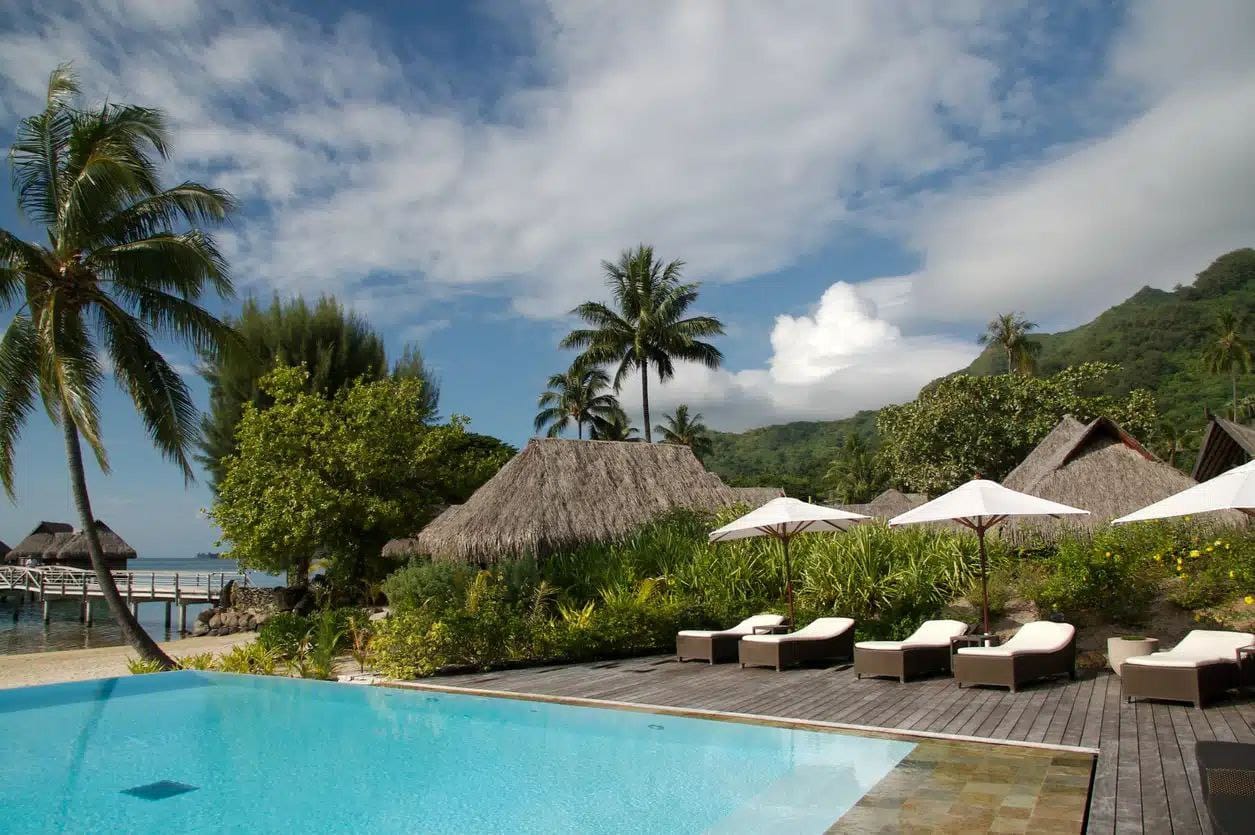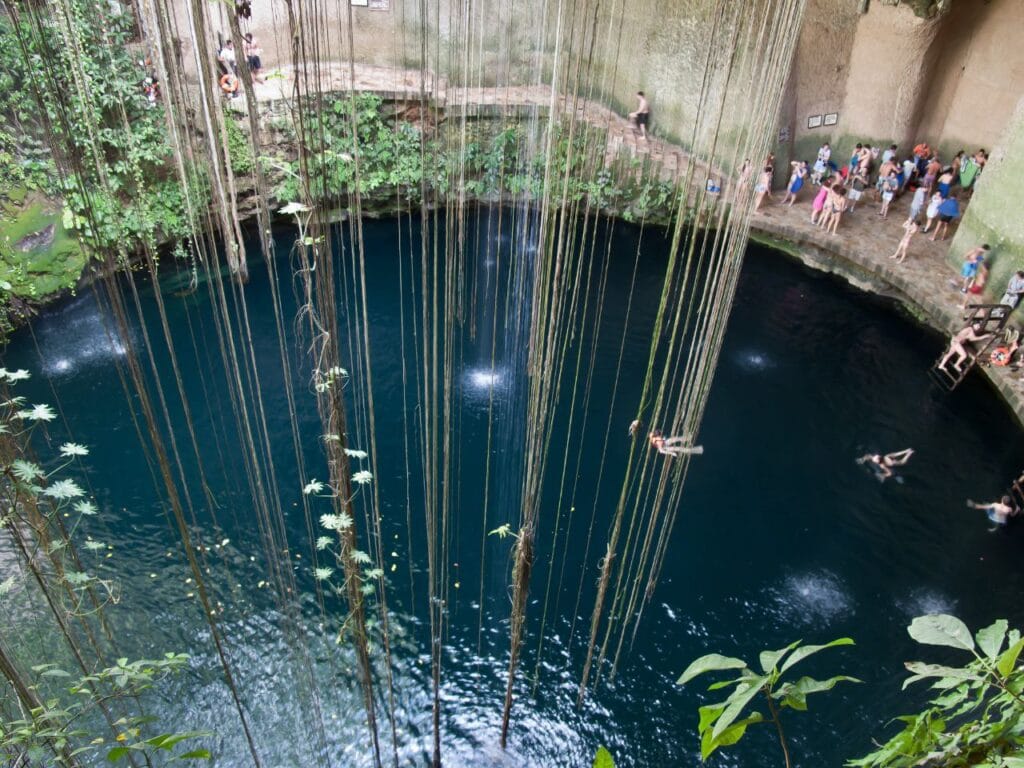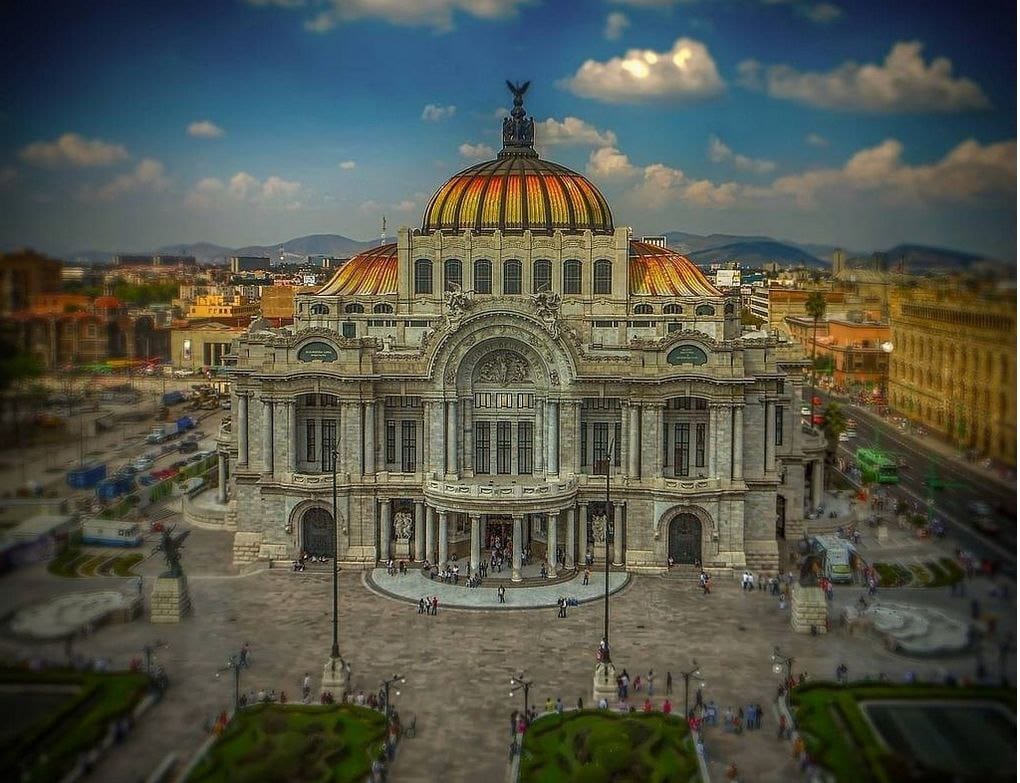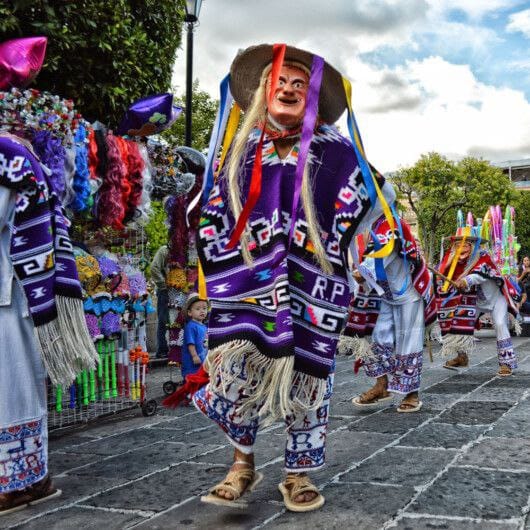Best Places to Go in Mexico, Why You Should go There.
Mexico, a land of staggering diversity, beckons travelers with its kaleidoscope of experiences. From the whispers of ancient civilizations echoing through majestic ruins to the rhythm of modern life in bustling cities, and the serene beauty of turquoise coastlines, planning a trip can feel overwhelming. Where do you even begin? This guide focuses on some of the best places to go in Mexico, designed to give you a taste of the country’s rich tapestry through a tour perspective. We’ll journey through the cultural heart of Oaxaca, delve into the historical layers of Mexico City and Teotihuacan, and relax amidst the natural wonders of Tulum and the Riviera Maya. These Mexico destinations offer a blend of history, culture, nature, and gastronomy that defines the magic of Mexico. Engaging with a local tour guide can significantly enhance your experience, offering deeper insights and navigating the nuances of each region. Let this guide be your starting point for discovering the incredible places to visit in Mexico on an unforgettable tour.
Historical Significance and Background:
Mexico’s story is etched in stone and spirit. Before the Spanish arrival, mighty civilizations like the Maya in the Yucatan (near Tulum and Chichen Itza), the Aztecs in Central Mexico (Tenochtitlan, now Mexico City), and the Zapotecs in the south (Monte Albán near Oaxaca) flourished. Their pyramids, temples, and cities, like the awe-inspiring Teotihuacan near Mexico City, stand as testaments to their ingenuity. The Spanish conquest in the 16th century introduced a new era, overlaying colonial architecture, language, and religion onto the indigenous foundations. This fusion is palpable in the historic centers of cities like Oaxaca and Mexico City (a UNESCO World Heritage site), where grand cathedrals stand near ancient Aztec temple remnants (Templo Mayor). Understanding this complex history enriches any visit to these best places to go in Mexico.

Why Should You Visit These Destinations?
- Oaxaca: Often called the “real Mexico,” Oaxaca entrances visitors with its deep indigenous roots, vibrant arts scene, world-renowned cuisine (think mole and mezcal!), and stunning colonial architecture. It’s a hub for culture seekers.
- Mexico City & Teotihuacan: The sprawling capital offers a dynamic mix of ancient history (Templo Mayor, Anthropology Museum), colonial charm (Historic Center), world-class museums (Frida Kahlo House), and modern energy. Nearby, the pyramids of Teotihuacan offer a breathtaking glimpse into a powerful pre-Aztec civilization. It’s a must for history buffs and urban explorers.
- Tulum & Riviera Maya: This Caribbean coastal stretch combines stunning natural beauty – white-sand beaches, turquoise waters, lush jungle, and mystical cenotes (underground swimming holes) – with dramatic cliffside Mayan ruins (Tulum, Coba). It’s ideal for beach lovers, nature enthusiasts, and those seeking relaxation mixed with history.
Nearest Popular Tourist Attractions:
- Near Oaxaca: Monte Albán (ancient Zapotec capital), Hierve el Agua (petrified waterfalls), Mitla ruins, artisan villages (Teotitlán del Valle for weaving).
- Near Mexico City: Coyoacán (Frida Kahlo Museum), Xochimilco (floating gardens), Puebla (colonial city known for Talavera pottery and mole).
- Near Tulum: Coba ruins (climbable pyramid), Sian Ka’an Biosphere Reserve (UNESCO site), Playa del Carmen (bustling resort town), numerous cenotes, Chichen Itza (a longer day trip, but one of the New Seven Wonders of the World).

How to Start The Journey from Capital City (Mexico City)
Mexico City (CDMX) serves as a major hub.
- To Oaxaca: Frequent flights (approx. 1-1.5 hours) connect CDMX to Oaxaca City (OAX). Comfortable overnight luxury buses (ADO GL or Platino) are also a popular and scenic option (approx. 6-7 hours).
- To Tulum/Riviera Maya: Fly from CDMX (MEX or NLU airports) to Cancun (CUN) or the newer Tulum International Airport (TQO) (approx. 2-2.5 hours). From Cancun airport, take an ADO bus or pre-booked shuttle to Tulum (approx. 1.5-2 hours). From TQO, transport options to Tulum town are available.
Transportation Options:
- Between Cities: Domestic flights (Viva Aerobus, Aeroméxico, Volaris) and long-distance buses (ADO is the main operator) are the primary ways to travel between major Mexico destinations.
- Within Cities/Regions:
- Oaxaca: The historic center is very walkable. Taxis and colectivos (shared taxis) are available for longer distances. Hiring a local tour guide often includes transportation for day trips.
- Mexico City: Extensive Metro system, Metrobús, ride-sharing apps (Uber/DiDi), and official taxis (sitio taxis are generally safer than hailed street taxis). Walking is great for specific neighborhoods like the Historic Center or Condesa.
- Tulum/Riviera Maya: Taxis, bike rentals (popular in Tulum town and hotel zone), colectivos running along the main highway, and rental cars (useful for exploring cenotes and ruins independently). ADO buses connect major towns.
Best Time To Visit:
Mexico’s climate varies by region and altitude. Generally:
- Dry Season (High Season): December to April. Offers the most pleasant weather (sunny, warm days, cooler nights, especially at altitude like Mexico City and Oaxaca). This is also the busiest and most expensive time.
- Shoulder Seasons: October/November and May. Often considered ideal. November sees the end of the rains, lush landscapes, and fewer crowds before the peak season. May is warmer, preceding the main rainy season. Oaxaca is lovely in Oct/Nov (Day of the Dead) and April/May.
- Rainy Season (Low Season): June to September/October. Rain usually comes in afternoon downpours, not all-day washouts. Landscapes are greenest. Fewer crowds and potentially lower prices, but hurricane season peaks in September/October, especially affecting coastal areas like Tulum.
- Mexico City: Relatively mild year-round due to altitude. Spring (March-May) offers warm, dry weather.
- Oaxaca: Spring (April-May) and Fall (Sept-Oct) have idyllic weather. High season (Oct-Mar) is cooler and dry.
- Tulum: Warm year-round. Avoid peak hurricane season (Aug-Oct) if possible. Dry season (Dec-Apr) has the best beach weather but is crowded.
Scenic Route To Place:
- To Oaxaca: The bus journey from Mexico City or Puebla winds through mountains, offering glimpses of rural life and changing landscapes. Driving allows for stops in interesting towns.
- Riviera Maya: Driving the coastal Highway 307 offers views of the Caribbean Sea on one side and dense jungle on the other, with easy access to beaches, cenotes, and ruins.
Picturesque Landscapes:
- Oaxaca: Rolling hills and mountains surrounding a vibrant colonial city, agave fields for mezcal production, unique formations like Hierve el Agua.
- Mexico City: A vast urban landscape framed by distant volcanoes, historic plazas, leafy parks like Chapultepec, and the ancient grandeur of Teotihuacan’s pyramids rising from the valley floor.
- Tulum/Riviera Maya: Iconic white-sand beaches meeting turquoise Caribbean waters, dramatic cliffs topped with Mayan ruins, lush green jungle, and the otherworldly beauty of underwater caves (cenotes).

Local and Traditional Culture:
- Oaxaca: A stronghold of indigenous Zapotec and Mixtec cultures. This is reflected in languages, traditional dress, intricate crafts (weaving, pottery, alebrijes), bustling markets (Benito Juárez, 20 de Noviembre), vibrant festivals (Guelaguetza in July, Day of the Dead in Nov), and deep culinary traditions.
- Mexico City: A melting pot where ancient Aztec roots, Spanish colonial heritage, and modern Mexican identity converge. Experience it in the Zócalo (main square), museums, diverse neighborhood vibes (historic, bohemian, upscale), and street life.
- Tulum/Riviera Maya: Mayan heritage persists alongside international tourism. You can experience it through visiting archaeological sites, participating in community tours, learning about traditional Mayan cuisine, and hearing Mayan languages spoken in some villages.

Exploring The Place:
- Oaxaca: Wander the colorful streets of the historic center, visit the Templo de Santo Domingo and its cultural museum, explore local markets, take a cooking class, visit artisan villages, and tour mezcal distilleries. A local tour guide can unlock hidden gems.
- Mexico City: Walk the Historic Center (Metropolitan Cathedral, National Palace), visit the National Museum of Anthropology (a must!), explore Chapultepec Park and Castle, float down the canals of Xochimilco, and immerse yourself in neighborhoods like Coyoacán and Roma Norte. Take a guided tour of Teotihuacan.
- Tulum/Riviera Maya: Explore the Tulum ruins early to beat crowds, swim and snorkel in various cenotes (Dos Ojos, Gran Cenote), relax on the beaches, visit nearby Coba or Chichen Itza, take a boat trip in the Sian Ka’an Biosphere, or enjoy water activities like snorkeling and diving.
Artifacts And Exhibits:
- Oaxaca: Museo de las Culturas de Oaxaca (housed in Santo Domingo convent) showcases incredible pre-Hispanic artifacts, especially from Monte Albán. Numerous galleries display contemporary and folk art.
- Mexico City: The National Museum of Anthropology holds an unparalleled collection of artifacts from across Mexico’s ancient civilizations (Sun Stone, Aztec artifacts, Mayan treasures). Templo Mayor museum exhibits finds from the main Aztec temple. Chapultepec Castle displays historical furnishings and art.
- Tulum/Riviera Maya: The archaeological sites themselves (Tulum, Coba, Chichen Itza, Muyil) are the main exhibits, showcasing Mayan architecture, carvings, and frescoes (like at Tulum’s Temple of the Frescoes). Smaller site museums exist.
Visitor Experience:
Expect a sensory feast! Vibrant colors, tantalizing smells from street food stalls, the sounds of bustling markets and local music, the warmth of the sun, and the richness of history surround you. Engaging with locals, even with basic Spanish phrases, enhances the experience. Hiring a local tour guide provides context and deeper understanding, transforming sightseeing into a meaningful connection with the place.
Cruise On The Place:
- Mexico City: The famous trajineras (colorful gondola-like boats) in Xochimilco offer a unique floating fiesta experience.
- Tulum/Riviera Maya: Catamaran tours are popular for sailing along the coast, snorkeling, and visiting places like Isla Mujeres (from Cancun/Playa del Carmen). Boat tours explore the Sian Ka’an Biosphere Reserve.
Wildlife And Nature:
- Oaxaca: The surrounding Sierra Norte mountains offer hiking and birdwatching opportunities in community-run eco-tourism projects. Coastal Oaxaca (Puerto Escondido, Huatulco) has marine life, including whale watching (Dec-Mar) and turtle nesting sites.
- Mexico City: Despite being a megacity, Chapultepec Park provides green space. The Monarch Butterfly Biosphere Reserve (a few hours away) is a spectacular sight from November to March.
- Tulum/Riviera Maya: Rich marine life (sea turtles, colorful fish) for snorkeling/diving, jungle wildlife (monkeys, coatis, exotic birds), whale sharks (seasonal, near Isla Mujeres), and unique cenote ecosystems.
Local Cuisine And Traditional Dishes:
- Oaxaca: Famous for its seven types of mole, tlayudas (large crispy tortillas with toppings), chapulines (grasshoppers), Oaxacan cheese (quesillo), tamales wrapped in banana leaves, and mezcal. Don’t miss the street food and markets.
- Mexico City: A culinary universe! Tacos al pastor, street corn (elotes/esquites), tamales, pambazos, pozole, chilaquiles. Explore markets like Mercado de San Juan for exotic ingredients.
- Tulum/Riviera Maya: Yucatecan specialties like cochinita pibil (slow-roasted pork), sopa de lima (lime soup), fresh seafood ceviche, and marquesitas (crispy rolled crepes).
Recommended Restaurants:
- Oaxaca: Explore the food stalls in Mercado Benito Juárez and 20 de Noviembre. For sit-down experiences try renowned spots known for traditional cuisine like Casa Oaxaca or explore modern interpretations. Many tours include meals at local favorites.
- Mexico City: Endless options! From legendary street taco stands (research reputable ones) to Pujol (high-end, requires reservation) and traditional cantinas. Food tours are a great way to sample.
- Tulum: Ranges from beachside shacks serving fresh ceviche (often found in the Hotel Zone) to trendy, upscale jungle restaurants (Hartwood, Kin Toh – reservations often needed) and simple, authentic eateries in Tulum Pueblo (town).
Accommodation Options and Budget-friendly Stays:
- Oaxaca: Offers charming boutique hotels in colonial buildings, well-regarded hostels, guesthouses, and budget-friendly hotels.
- Mexico City: Huge range from luxury international chains (Reforma, Polanco) to stylish boutique hotels (Condesa, Roma), hostels (Historic Center, Condesa), and Airbnb options across various neighborhoods.
- Tulum: Divided between the more expensive, eco-chic cabanas and hotels along the beach (Hotel Zone) and more budget-friendly hostels, guesthouses, and hotels in Tulum Pueblo (the town). All-inclusive resorts are more common further north in the Riviera Maya (Playa del Carmen, Cancun).
Tips For A Memorable Trip:
- Learn Basic Spanish: Even simple phrases like “Hola,” “Gracias,” “Por favor,” and “Cuánto cuesta?” go a long way.
- Stay Hydrated: Drink bottled water only.
- Use Sun Protection: Sunscreen, hats, and sunglasses are essential, especially at the coast and ruins.
- Carry Cash: While cards are accepted in many tourist spots, smaller vendors, markets, and some taxis often require cash (Mexican Pesos).
- Be Open-Minded: Embrace the culture, try new foods, and be prepared for things to run on a different schedule sometimes (“Mexico time”).
- Consider a Local Tour Guide: They offer invaluable insights, handle logistics, and enhance safety, especially for exploring ruins or cultural sites.
Health And Safety:
- Travel Advisories: Check your home country’s current travel advisories for Mexico (e.g., US State Department, Travel.gc.ca). While millions visit safely, be aware of regional risks. Currently (as of early 2025), general advice is to “exercise increased caution” in many tourist areas due to crime. Avoid non-essential travel to specific states if advised.
- Crime: Petty theft (pickpocketing) can occur in crowded areas, markets, and public transport. Be aware of your surroundings, don’t flash valuables, and keep belongings secure. Violent crime exists but tourists are rarely targeted, especially if sticking to tourist areas and taking precautions. Avoid walking alone at night, especially in unfamiliar areas.
- Transportation: Use reputable taxi companies (sitio taxis, ride-sharing apps) or pre-booked transport. Avoid hailing street taxis in Mexico City. Be cautious on overnight buses – choose first-class options (like ADO GL/Platino) which are generally safer and use toll roads.
- Food & Water: Drink only bottled or purified water. Be cautious with street food – choose busy stalls where food is cooked fresh in front of you. Peel fruits or wash them thoroughly with purified water.
- Health: Pack a basic first-aid kit. Ensure routine vaccinations are up to date. Consider travel insurance that covers medical emergencies.
Do’s and Don’ts:
- Do: Try the local cuisine, engage with locals politely, visit markets, explore historical sites respectfully.
- Do: Bargain politely in markets where appropriate (but not in established shops).
- Do: Tip appropriately (usually 10-15% in restaurants, small amounts for porters, guides).
- Don’t: Drink tap water.
- Don’t: Display large amounts of cash or expensive jewelry.
- Don’t: Take photos of people (especially indigenous individuals) without asking permission first.
- Don’t: Wander into unfamiliar neighborhoods alone, especially at night.
- Don’t: Participate in illegal activities.
Respectful Behavior:
- Dress: Dress modestly when visiting churches or religious sites (cover shoulders and knees). Casual wear is fine elsewhere, but beachwear is generally only for the beach/pool.
- Greetings: A simple “Buenos días” (Good morning), “Buenas tardes” (Good afternoon), or “Buenas noches” (Good evening/night) is appreciated.
- Photography: Always ask permission before taking photos of individuals or their property, particularly in indigenous communities.
- Cultural Sites: Treat archaeological ruins and historical buildings with respect. Don’t climb on structures unless permitted, don’t touch carvings or artifacts, and don’t leave litter.
Conclusion:
Mexico offers a world of adventure, culture, and beauty. Touring the best places to go in Mexico, such as the soulful streets of Oaxaca, the historical depths of Mexico City and Teotihuacan, and the stunning natural playground of Tulum, provides an incredibly rich and diverse travel experience. These Mexico destinations are just a starting point; the country holds countless other wonders. By planning thoughtfully, staying aware, embracing the local culture respectfully, and perhaps enlisting the help of a knowledgeable local tour guide, your journey through the incredible places to visit in Mexico will undoubtedly be memorable.

